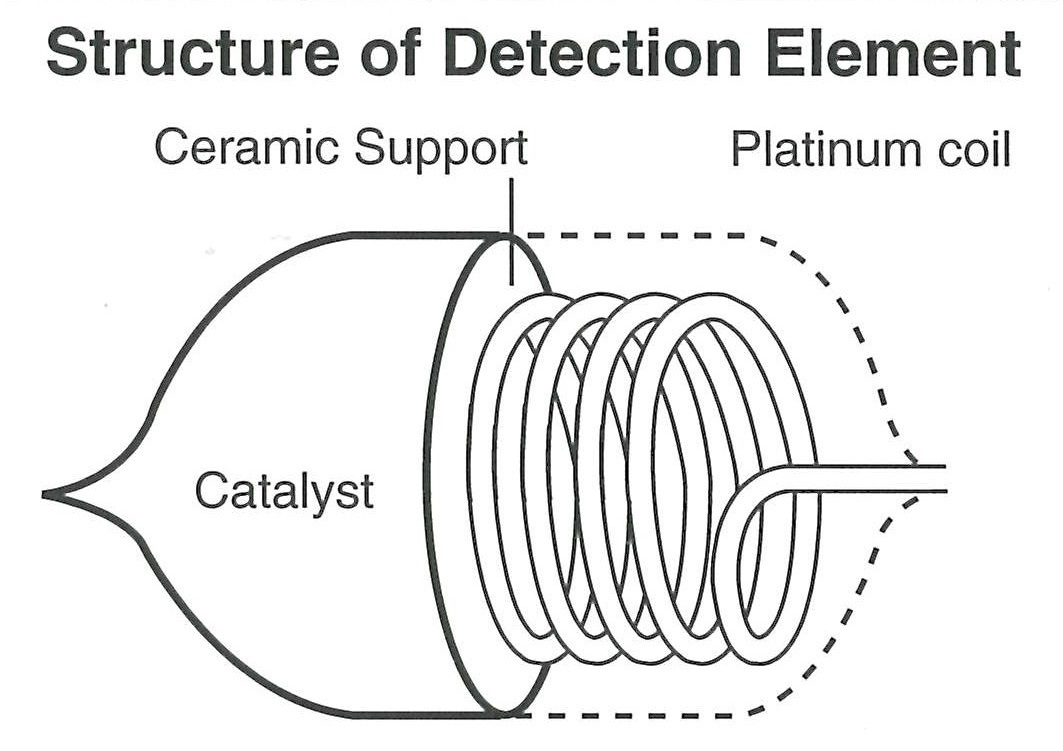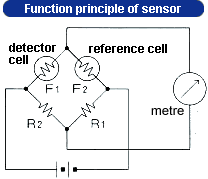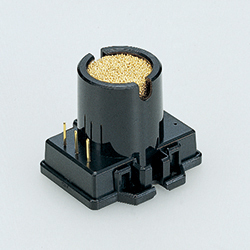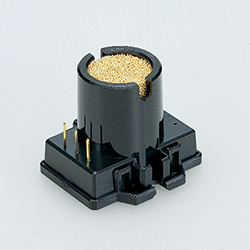Catalytic combustion sensors are classified according to the method employed to measure combustible gas, and they have come to be widely used to prevent methane explosions in coal mines from about 1959. Since then, they have been improved considerably and are now more widely used throughout various industrial sectors as reliable sensors.
- Accuracy and reproducibility are excellent
- Low power consumption allows devices to be more compact
- Hardly affected by ambient temperature and humidity
- The output curve (to just short of the explosion threshold) is almost a straight line
Configuration detector element
The sensor consists of a detector cell and a reference cell. The detector cell basically is a platinum wire coil (φ0.05mm or less)to which the carrier is attached, and it is coated with an oxidization catalyst such as alumina. When the powered sensor is exposed to combustible gas, the gas will burn. The reference cell is essentially an identical platinum coil, that has been treated to prevent combustible gas from igniting upon contact. (Since both cells become extremely hot during use which could ignite the combustible gas, they are enclosed in an explosion-proofed protective sintered metal and stainless steel 200-mesh netting to prevent sparking).

Function principle
The gas concentration is measured with a Wheatstone-Bridge circuit as in the diagram. The detector cells F1 and F2 are designed to have equal electrical resistance when no combustible gas is present in the sampled air. Therefore, in a state where F1 x R1=F2 x R2, the bridge circuit will be in equilibrium, and current will not flow through the metre. However, when air containing combustible gas burns and contacts the detector cell, the electrical resistance increases with the combustion heat, and equilibrium of the bridge circuit is lost, with current flowing through the metre virtually proportional to the combustible gas concentration below the lower explosive limit.

Sensitivity to combustible gas
The sensitivity of a contact combustion type sensor shows almost equal sensitivity to all concentrations below the LEL (lower explosion limit) threshold of virtually all combustible gases (or mixed concentrations thereof). Therefore, almost all combustible gases can be measured with any measuring device that can be calibrated with a scale having the LEL as 100%.
*The products may not be sold depending on countries and regions.
Please use the relevant link below to make an inquiry.
Product search
-
Detector tube Search
-
Search other products
-
Product search








